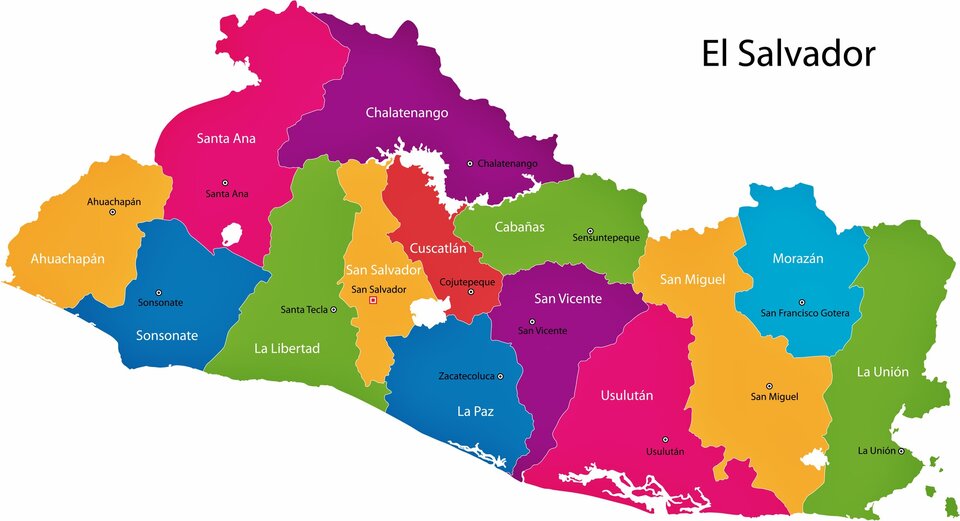El Salvador, a gem in Central America, is celebrated for its cities like San Salvador, Santa Ana, and La Libertad, each offering unique cultural and historical experiences.
From the ancient ruins of Tazumal to the vibrant streets of San Miguel and the artistic spirit of La Palma, these cities offer a rich tapestry of the nation’s heritage.
Whether exploring the bustling capital, relaxing on scenic beaches, or delving into local arts, El Salvador’s cities provide a diverse and enriching journey.
Here’s a brief overview of some key cities in El Salvador, each with unique offerings:
San Salvador:
As the capital city, San Salvador is the political, cultural, and economic heart of the country. It boasts a mix of colonial and modern architecture, vibrant markets, and significant landmarks like the National Palace and the Metropolitan Cathedral.
San Salvador, offers a rich tapestry of history and modernity. Known for its vibrant street life, the city boasts landmarks like the National Palace and Metropolitan Cathedral. With a dynamic blend of cultural institutions, historical sites, and contemporary urban developments, San Salvador stands as a testament to the nation’s growth and diversity.
Santa Ana
This city is famous for its stunning neo-Gothic cathedral and rich coffee culture. The nearby Santa Ana Volcano offers breathtaking views of the surrounding landscape.
Santa Ana, El Salvador’s second-largest city, is celebrated for its well-preserved colonial architecture, particularly the stunning neo-Gothic Cathedral of Santa Ana. The city was once the heart of the country’s coffee industry and now serves as a cultural and artistic hub. Visitors are drawn to its historical charm, vibrant local markets, and the nearby Santa Ana Volcano, offering breathtaking views and outdoor adventures.
San Miguel
Known for its lively festivals, especially the November carnival, San Miguel is an important economic center in the eastern part of the country.
Located in eastern El Salvador, is known for its lively cultural atmosphere and economic significance. Famous for its annual carnival, a vibrant celebration attracting visitors nationwide, the city is a blend of traditional Salvadoran culture and modern urban development. San Miguel’s proximity to stunning beaches and natural landscapes adds to its appeal, making it a diverse and dynamic urban center in the country.
La Libertad: A favorite among surfers, La Libertad offers some of the best waves on the Pacific Coast. The city is also known for its fresh seafood and lively beach atmosphere.
Suchitoto: This picturesque town is known for its well-preserved colonial architecture and cobbled streets. Suchitoto is a cultural hub, hosting numerous arts and food festivals.
Apopa: Located in the San Salvador Metropolitan Area, Apopa is known for its urbanization and growing population.
Antiguo Cuscatlán: Boasting the highest Human Development Index in the country, Antiguo Cuscatlán is a symbol of progress within El Salvador.
Ciudad Delgado: Another key part of the San Salvador Metropolitan Area, Ciudad Delgado contributes to the urban landscape of the country’s capital region.
Mejicanos: As a populous city in the San Salvador Metropolitan Area, Mejicanos plays a significant role in the urban development of the region.
Santa Tecla: Blending modernity with cultural richness, Santa Tecla offers a mix of contemporary living and historical heritage.
Soyapango: Known for its high population density, Soyapango is an important urban center within El Salvador.
Juayua: Part of the scenic Ruta de las Flores, known for its food festival, waterfalls, and lush landscapes.
Each of these cities in El Salvador contributes to the nation’s rich tapestry of experiences, from the bustling streets of San Salvador to the serene beaches of La Libertad, offering visitors a glimpse into the diverse and dynamic character of this Central American country.
Here’s a brief overview of some small towns in El Salvador:
Concepción de Ataco: Known for its colorful murals and coffee plantations.
Apaneca: Offers beautiful landscapes and a famous lagoon.
Nahuizalco: Renowned for its indigenous crafts and night market.
Panchimalco: Holds deep cultural traditions and festivals.
Suchitoto: Famous for its colonial architecture and arts scene.
Juayúa: Known for its gastronomic festival and the nearby Seven Waterfalls.
Perquín: Offers a rich history with the Museum of the Revolution.
Zacatecoluca: A city with notable colonial architecture.
Cinquera: Revitalized post-civil war with a strong focus on eco-tourism.
Alegría: Famous for its beautiful crater lake and colorful gardens.
In concluding an article about the cities of El Salvador, it’s clear that each urban center, from the dynamic capital of San Salvador to the tranquil streets of Suchitoto, contributes uniquely to the nation’s rich cultural tapestry.
These cities of El Salvador with their blend of historical landmarks, vibrant festivals, and natural beauty, offer a window into the soul of El Salvador, showcasing its resilience, heritage, and spirit.
Visitors and residents alike find in the cities of El Salvador a captivating array of experiences, reflecting the country’s past and present, and hinting at its promising future.
Here you can read about the cities of Guatemala with usefull information about.
